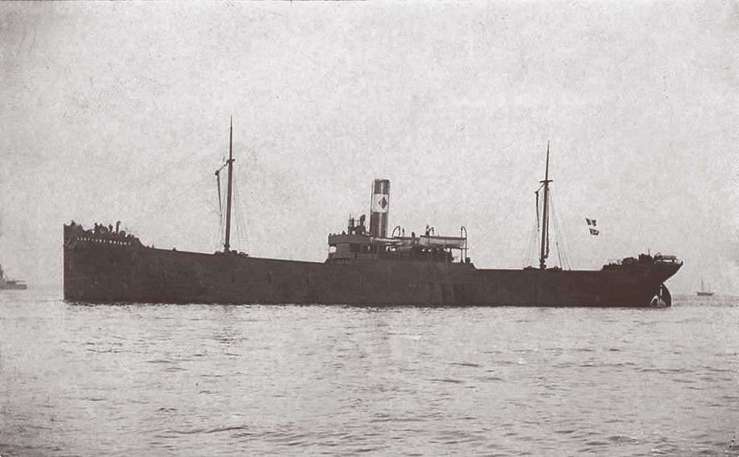James Simpson was born on 27 February 1898, in Chiddleton, Lancashire.
His father was John Herbert Simpson, born in 1869, a carrier and grocer, and his mother was Mary Simpson, who was also born in 1869. James was their eldest child, and five years later in 1903, Ellen was born, followed by Fanny in 1906 and John in 1912. There was also another child, Charles, born in 1908, who died at an early age.
The family lived at 30 Grimshaw Lane, Middleton Junction, Lancashire. They were reasonably comfortable as they had a servant. In 1911, the Census records that she was Eveline Eldson, a 17-year-old girl from Ellesmere, Shropshire. The family were Wesleyan Methodists and subscribed to the typical Victorian values of thrift, hard work and duty.
Initially James went to school at Chadderton Council School. He was considered to be quite bright and as a result of gaining a County Council Scholarship, he attended Manchester Grammar School from 1910-1914. His parents were immensely proud of the fact that he attended Manchester Grammar School and even had it included in his citation in the Register of Deaths at the Royal Navy Memorial, Plymouth.
The Archive Department at Manchester Grammar School has kindly given us details of some of his academic results:
1911: 6th out of 31 in form, 4th in English and 3rd in Nature Study.
1912: 2nd out of 19 in form, Top in Art, English and Physics.
1913: 5th out of 29 in form, Top in Art, 2nd in French.
1914: 11th out of 23 in form, 4th in English.
After leaving school, he continued to study Cotton Spinning through evening classes at the Manchester Municipal School of Technology, and began working in the offices of Messrs T B Woods, but was soon transferred to the offices of the Albany Spinning Company, Albany Mill, which had a mill in Grimshaw Lane.
In February 1916, James became 18 years of age and on 4 June 1916, he enlisted at St Peter’s Square, Manchester.
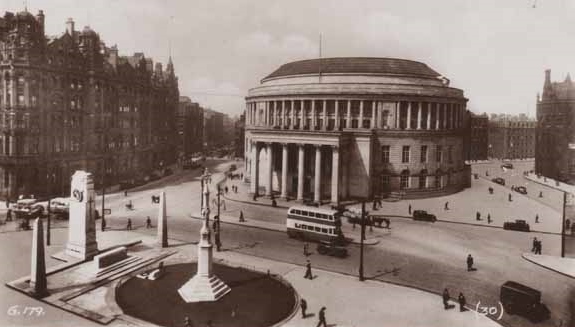
He joined the Royal Navy with the hope of becoming a Wireless Operator and so, three weeks later, on 24 June 1916, he left home to begin his training, travelling by train via Liverpool to Crystal Palace, London.
These are the letters that follow, mostly from James to his loving family, usually to his parents, sometimes just to his mother and occasionally letters to his younger sisters. Very occasionally we have a letter written by one of them, back to James.
Our intention is to post each letter on the 100th anniversary of the actual day it was written. On many days, there will be no letter but we will try to announce where James was on that day. He also kept a diary and we will post those extracts on the 100th anniversary of the diary entries. Similarly, he occasionally took some photographs and we will post those on the day they were taken.
In this way, you will be able to follow James’s story as he undertakes his training and joins the Royal Navy as a Wireless Operator, before joining various ships and going on different missions.
Once his letters suddenly end, you will be able to follow his parents’ attempts to find out what had happened to their much-beloved son.
James Simpson

This is the only formal picture we have of James in his uniform. It looks as if there were originally other people, possibly family members, besides him. Is the little boy on the left his little brother, Johnny?
James’s Birth Certificate:

The 1911 Census, showing James’s parents, John and Mary, James, aged 13 at that point, and his two younger sisters. Charles, born in 1908, had died by then and John had not yet been born. They had a servant girl, Eveline Eldson.


This is the Enumerator’s Report for the 1911 Census, showing what was going on in all the houses in Grimshaw Lane:
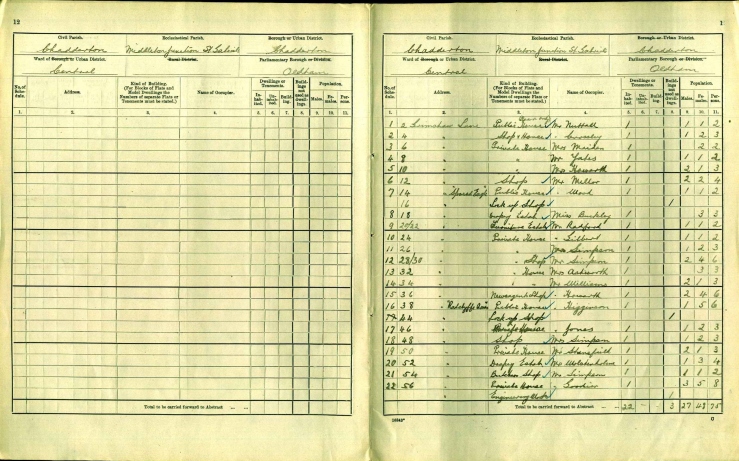
Grimshaw Lane today:
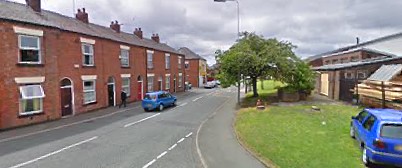
James as a young boy:
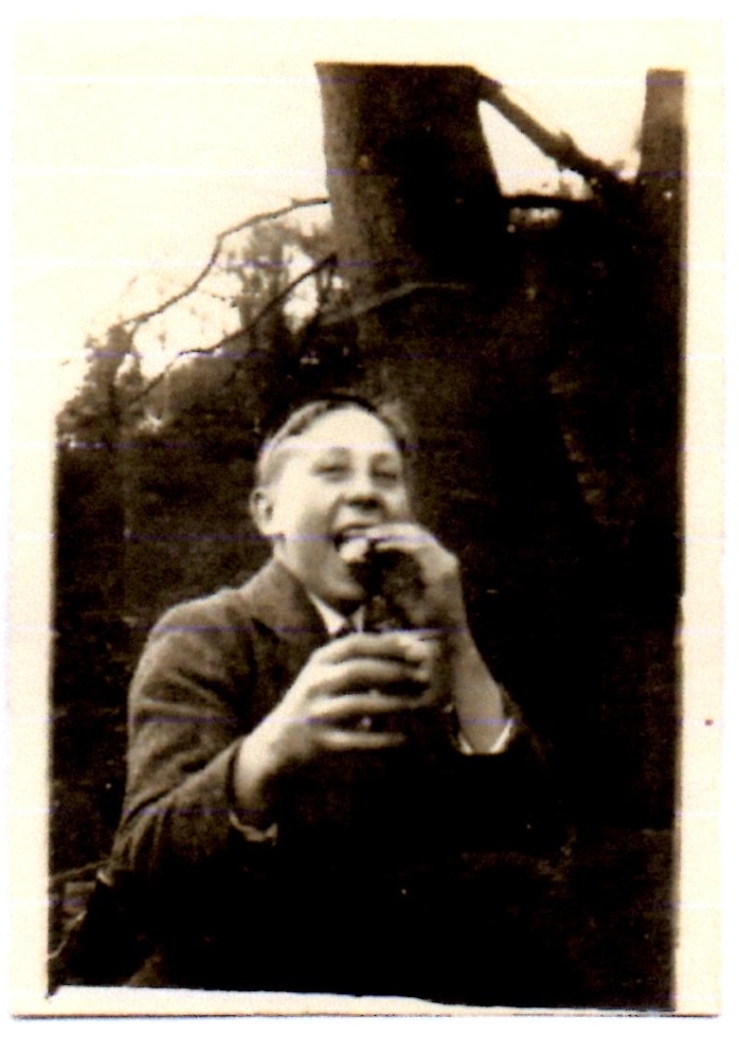
The only studio picture that we have of James, still on its original paper. We think this was taken when he was 18 or 19, possibly at the time he enlisted in June 1916, in Manchester’s St Peter’s Square.
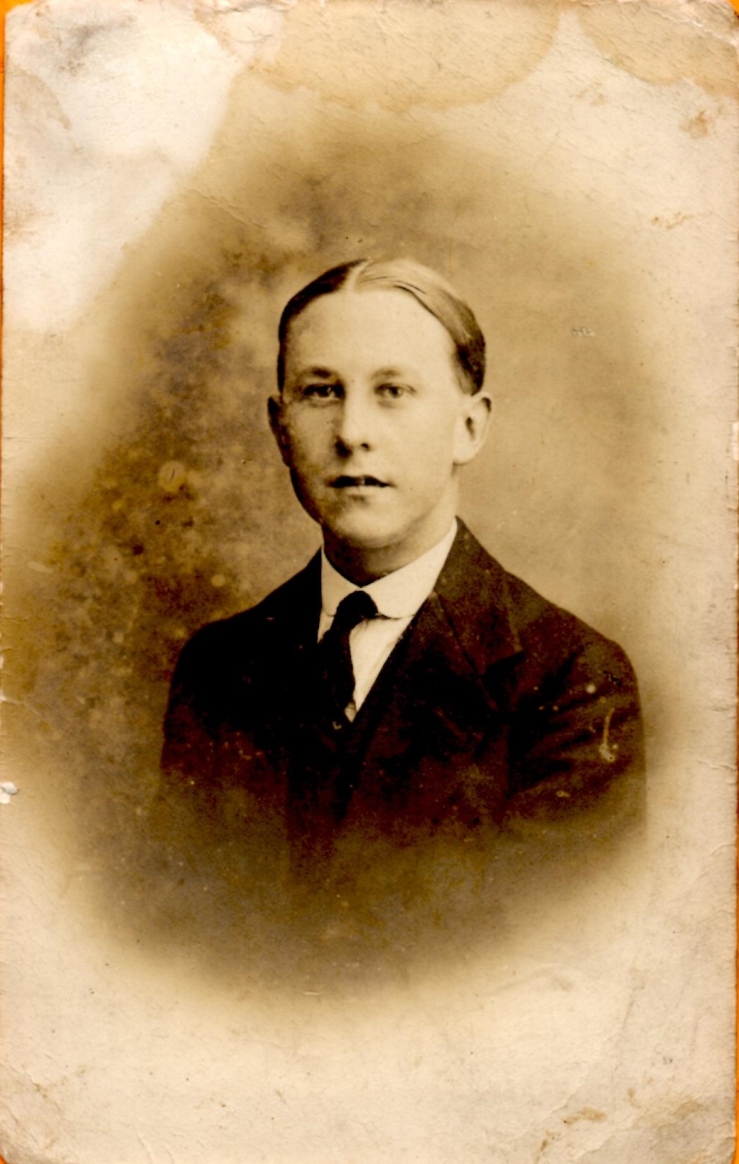
James arrived at Crystal Palace for his Royal Navy training on 25 July 1916. He got accepted into the Wireless Section of the Signal School on 23 August and completed his training by 1 November 1916. This is a postcard that he sent back to his family to show the Crystal Palace training area, and he has marked where the signal school was, just to the left of the main entrance. He sent the card after a Zeppelin raid over London, which he describes in his letter of 24 September 1916.
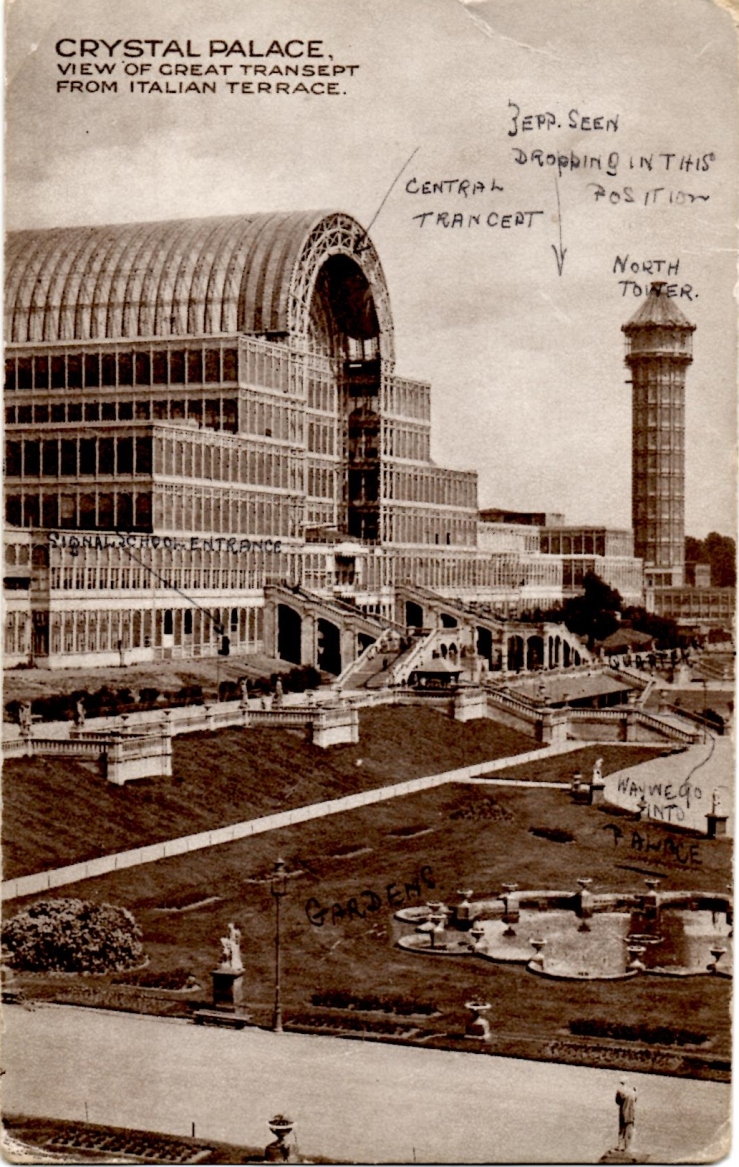

James had a camera for part of his time at sea and these are some pictures that he had taken of himself, by a crew mate. We think they were taken on 13 September 1917, outside the Wireless / Transmission Cabin, in which he would have worked, on HMS Lady Cory-Wright, which was docked in Portsmouth at the time.
 On this photograph, James has written on his nickname of “Sparkes”, given to him by his shipmates on his first boat, HMT (Her Majesty’s Trawler) Nodzu, when he boarded her in Milford Haven on 13 November 1916.
On this photograph, James has written on his nickname of “Sparkes”, given to him by his shipmates on his first boat, HMT (Her Majesty’s Trawler) Nodzu, when he boarded her in Milford Haven on 13 November 1916.
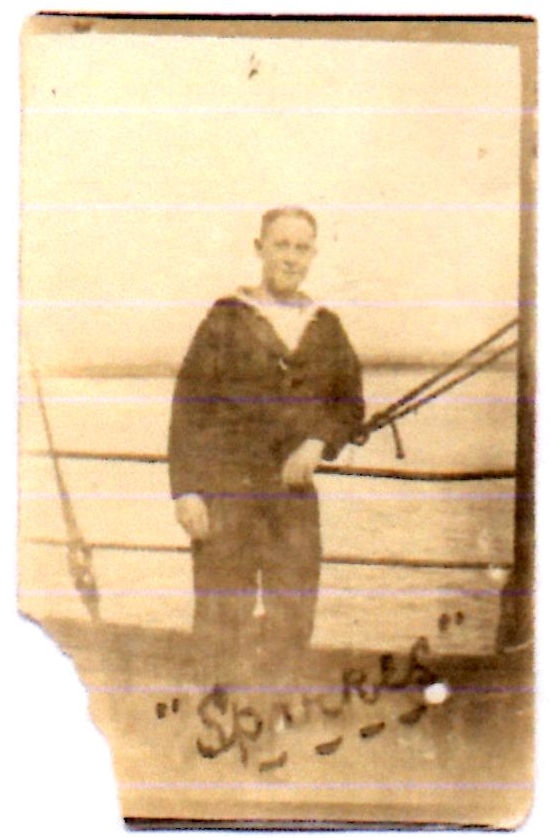
James kept a little diary throughout the months of his active service:
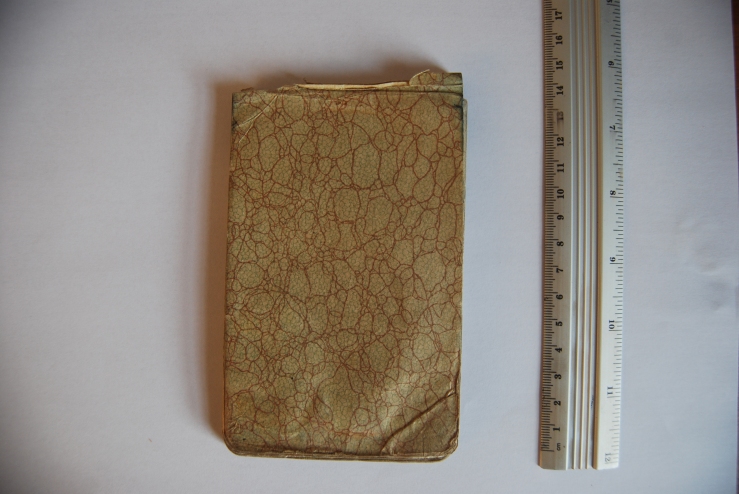
An example of the contents of his diary:
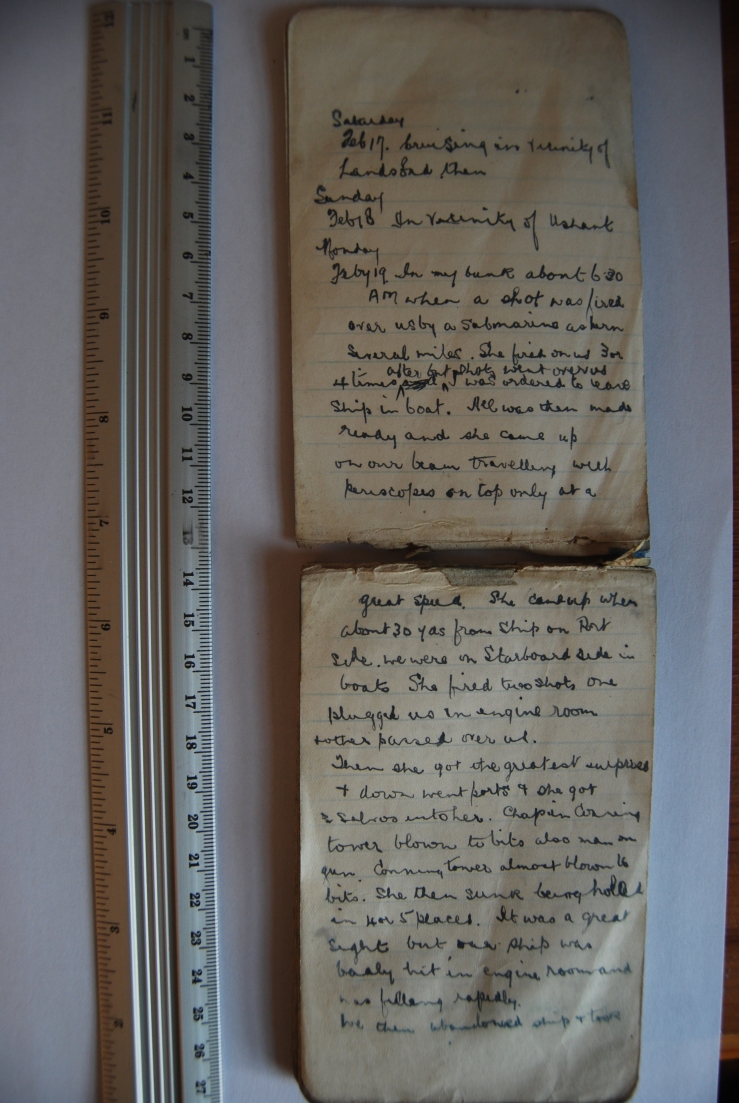 James’s first boat, HMT (Her Majesty’s Trawler) Nodzu, which he boarded on 13 November 1916, in Milford Haven. He served on her as the Wireless Transmission Seaman until 5 January 1917.
James’s first boat, HMT (Her Majesty’s Trawler) Nodzu, which he boarded on 13 November 1916, in Milford Haven. He served on her as the Wireless Transmission Seaman until 5 January 1917.

On 13 January 1917, he was posted to his second ship, The Lady Olive, a Q Ship. He served on board this ship until it was sunk by a German U-boat on 19 February 1917.
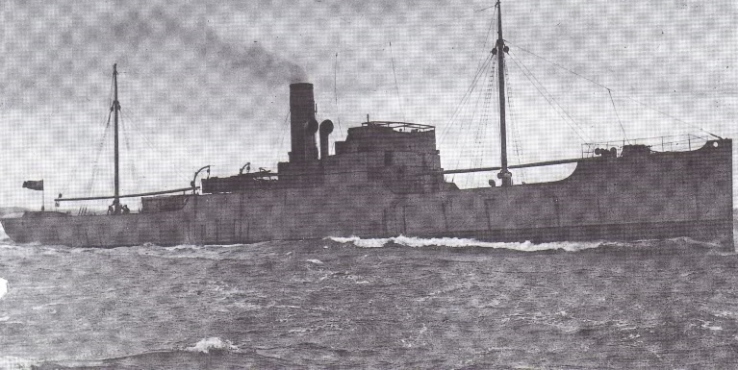
After almost a fortnight’s leave, James was sent to Portsmouth to join HMS Amphitrite, moored in the harbour whilst he waited for his next posting.
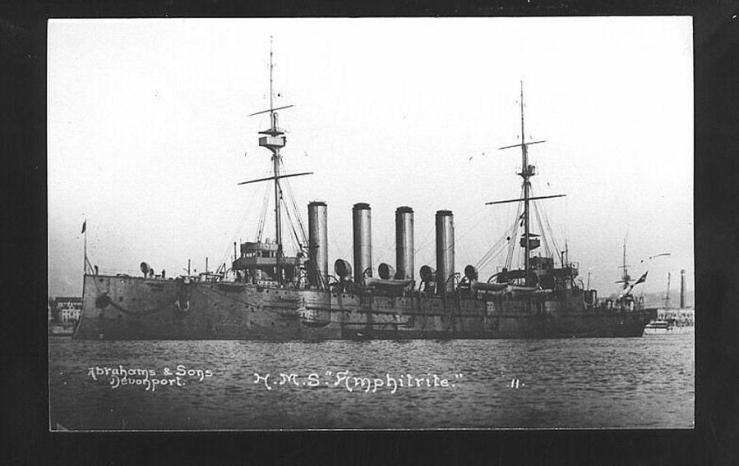
After about two weeks, James was sent to Plymouth to join his last ship, The Lady Cory-Wright, which he joined on Sunday 1 April 1917.
The Lady Cory-Wright:
